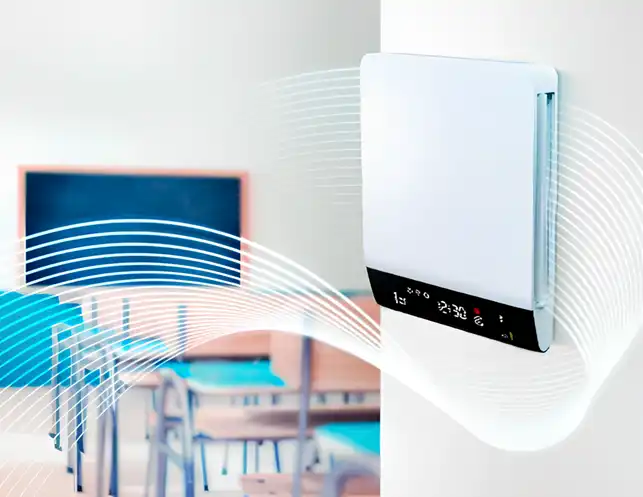Centralized and decentralized ventilation systems differences, Air exchange unit controls
Key differences between centralized and decentralized ventilation systems
29 July 2025
Choosing between a centralized and decentralized ventilation system is not an easy task. There’s a risk of getting lost in technical details. But let’s simplify things. Both systems have their advantages, and if you understand their essence, the choice becomes more obvious.
Centralized systems – everything under control
Centralized ventilation is like the main brain of the entire system. One large unit controls air exchange in several rooms at once. It sounds impressive – because it is.
As a rule, such a system requires a branched network of air ducts to move air around the rooms. So yes, it is effective, but mainly in large houses or offices.
Pros of centralized solutions:
- energy efficient for large facilities (everything in one place, fewer losses);
- flexible adjustments for different types of buildings – from apartments to shopping centers;
- provide a uniform level of air quality throughout the premises.
Cons:
- higher upfront cost for installation and equipment;
- requires regular maintenance of ducts and central units;
- it is not always convenient to set up different climates in different zones.
If you have a large house, office, or commercial premises, centralized ventilation may be the best solution. It reliably controls the microclimate in all rooms. With many years of experience, the ventilation company Vents offers a wide range of equipment that meets European standards. Reliability, energy efficiency, technical balance – everything is in place.
Decentralized systems for greater flexibility
Now let’s look at another solution. Decentralized systems work differently: each unit serves only one room. No air ducts, no common installation – each zone is controlled separately. Convenient? More than.
These systems are easier to install, cheaper, and give you more control. Want a quiet, cool bedroom and increased air exchange in the kitchen? Here you go.
Main benefits of decentralized systems:
- easy installation (no complicated ductwork);
- cheaper to start;
- can be customized for each room.
Drawbacks:
- large buildings may require many separate units;
- potentially higher maintenance costs;
- can be noisier if you don’t choose a soundproofed model.
Examples include the Vents Breezy series, an excellent model with a copper heat exchanger and control via an app. Recovery efficiency is up to 85%, plus air quality sensors and an EC motor. Or TwinFresh Atmo – with a ceramic heat exchanger, automatic dampers, and control via a smartphone. Such systems are great for apartments, bedrooms, and children’s rooms, where you need to improve the climate point by point.
Deciding between the two options
In short, it all depends on the scale and tasks. For a large house or office, a centralized system is better suited: it is more powerful, more stable, and requires less daily attention. But if you need point control or you do not want to deal with air ducts, a decentralized system is your choice.
To summarize:
- Centralized – for large spaces, when a single system and efficiency are important.
- Decentralized – for flexibility, local control, and savings on installation.
Proper ventilation is key to comfort and health!
Comments on this guide to 7 things to consider when finding investment properties in Glasgow Scotland article are welcome.
Buildings
Key Buildings in Scotland Articles
Historic Glasgow : best Glasgow architecture of the past
Comments / photos for the 7 things to consider when finding investment properties in Glasgow advice guide page welcome.



